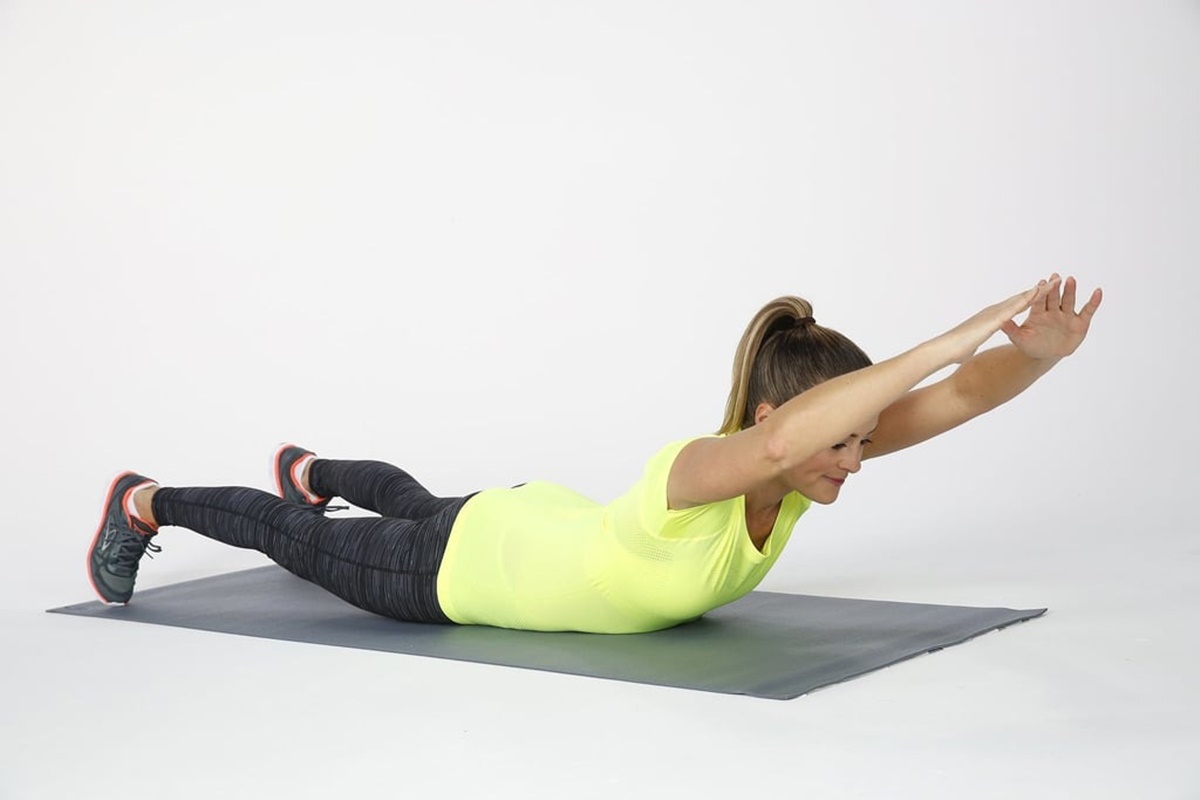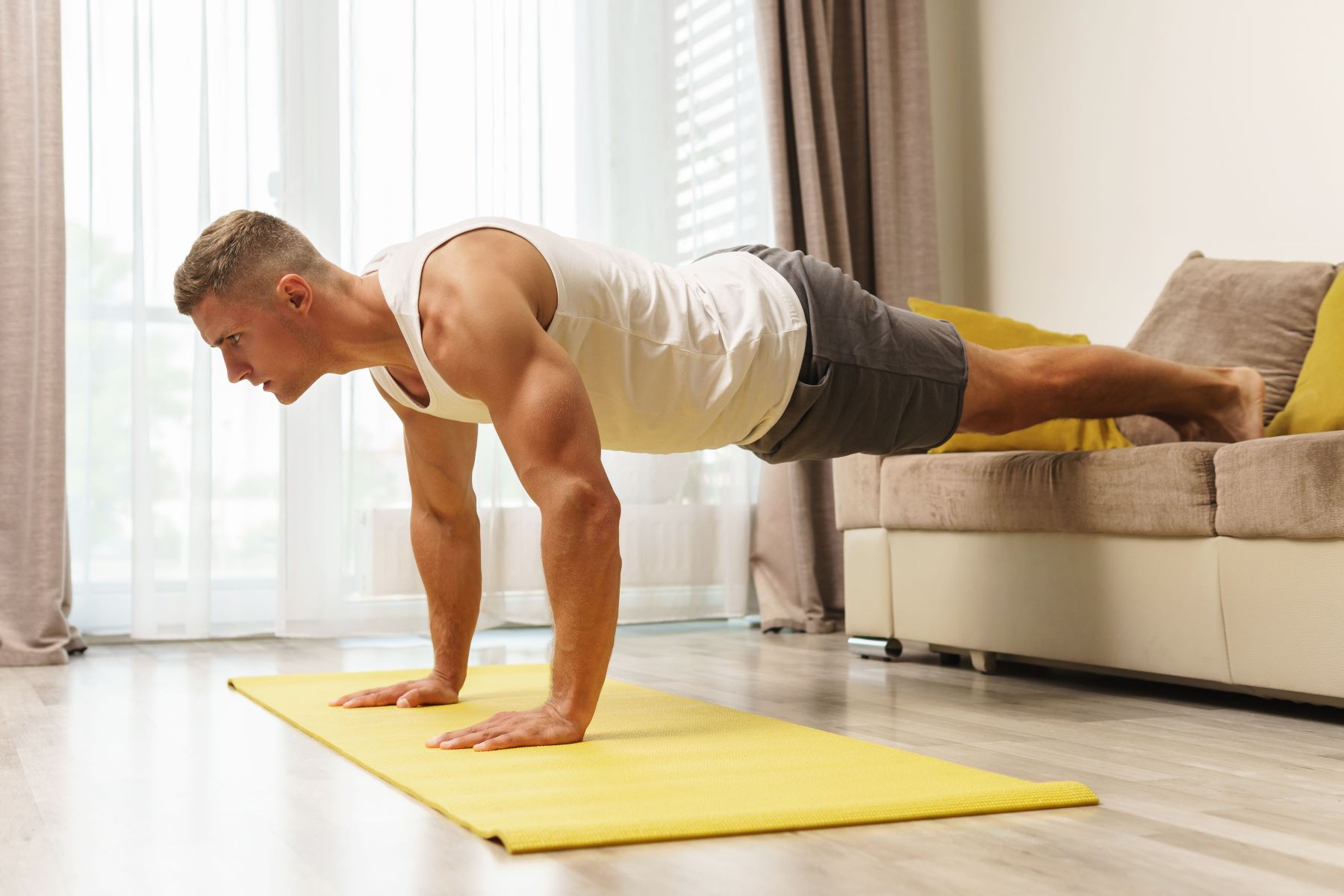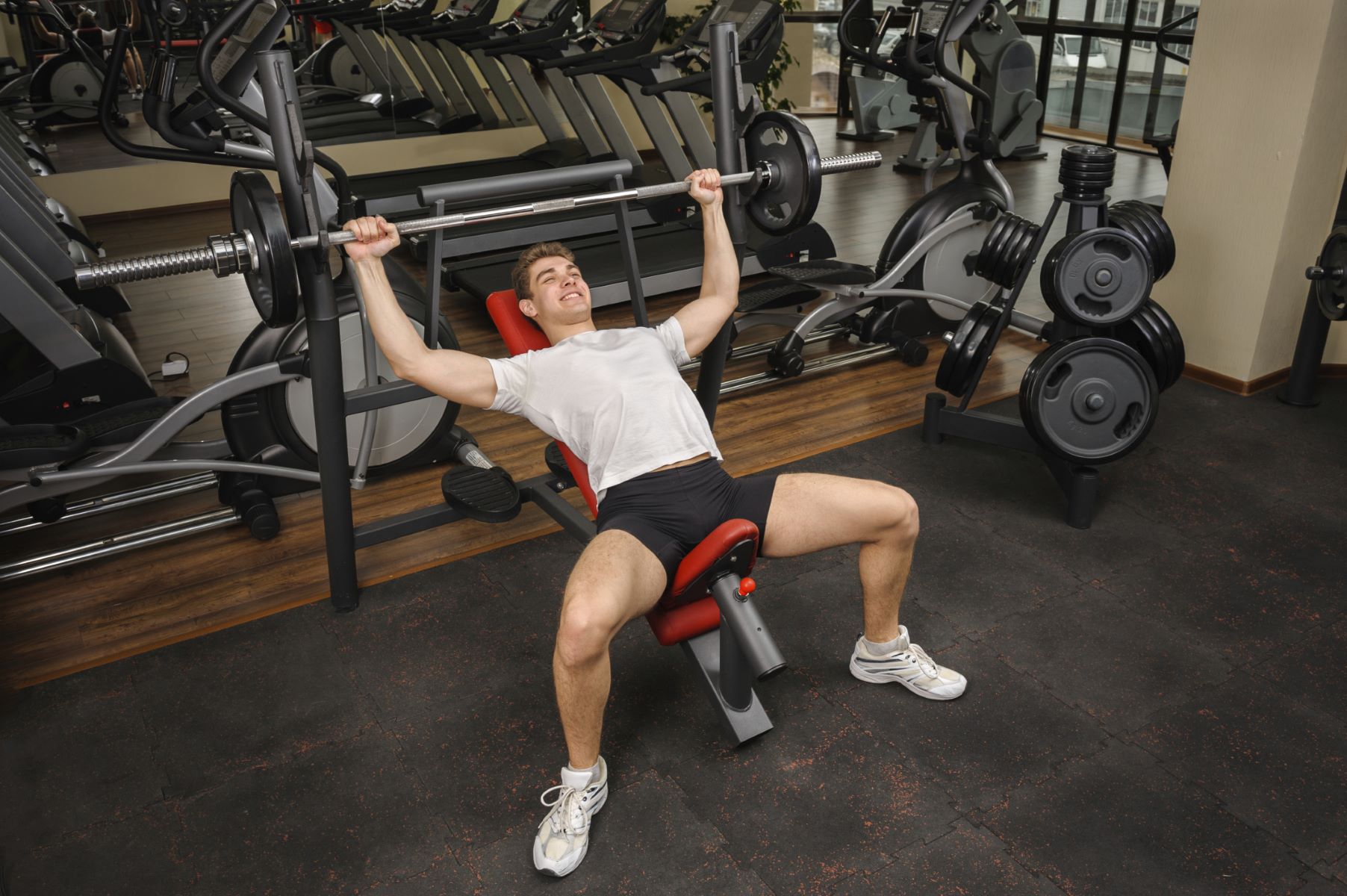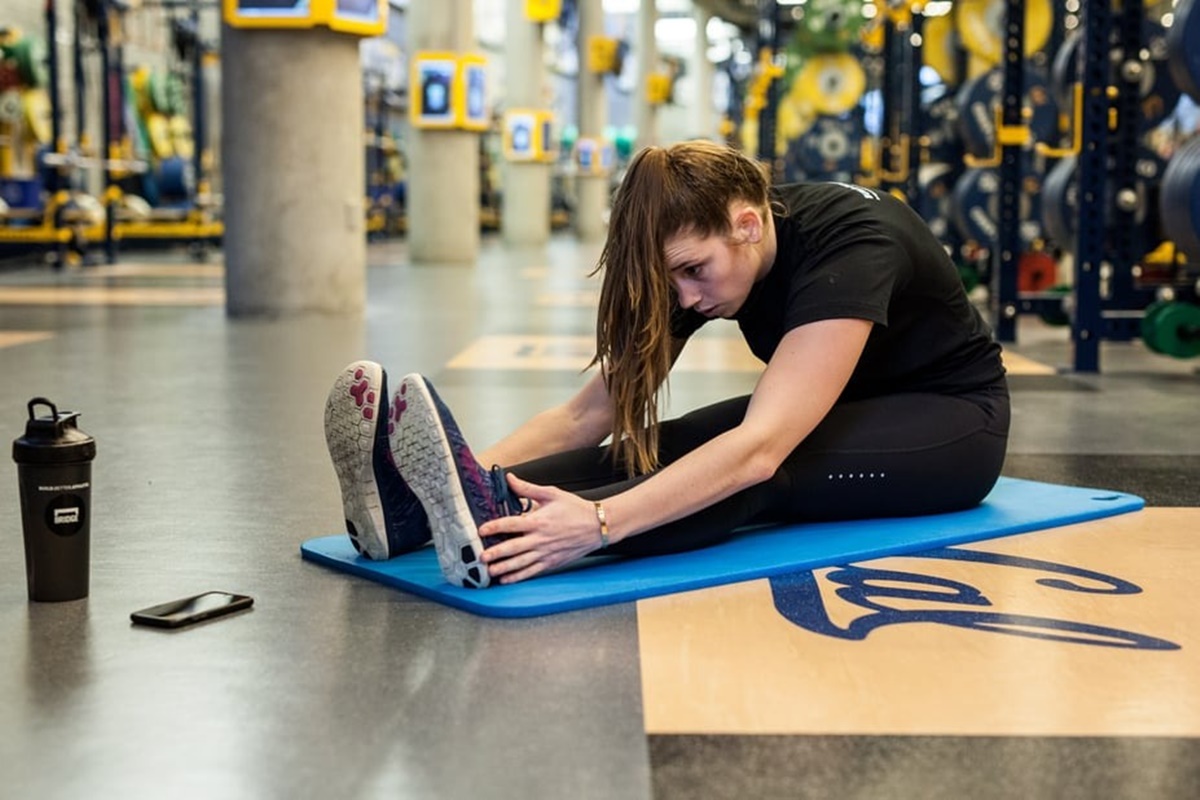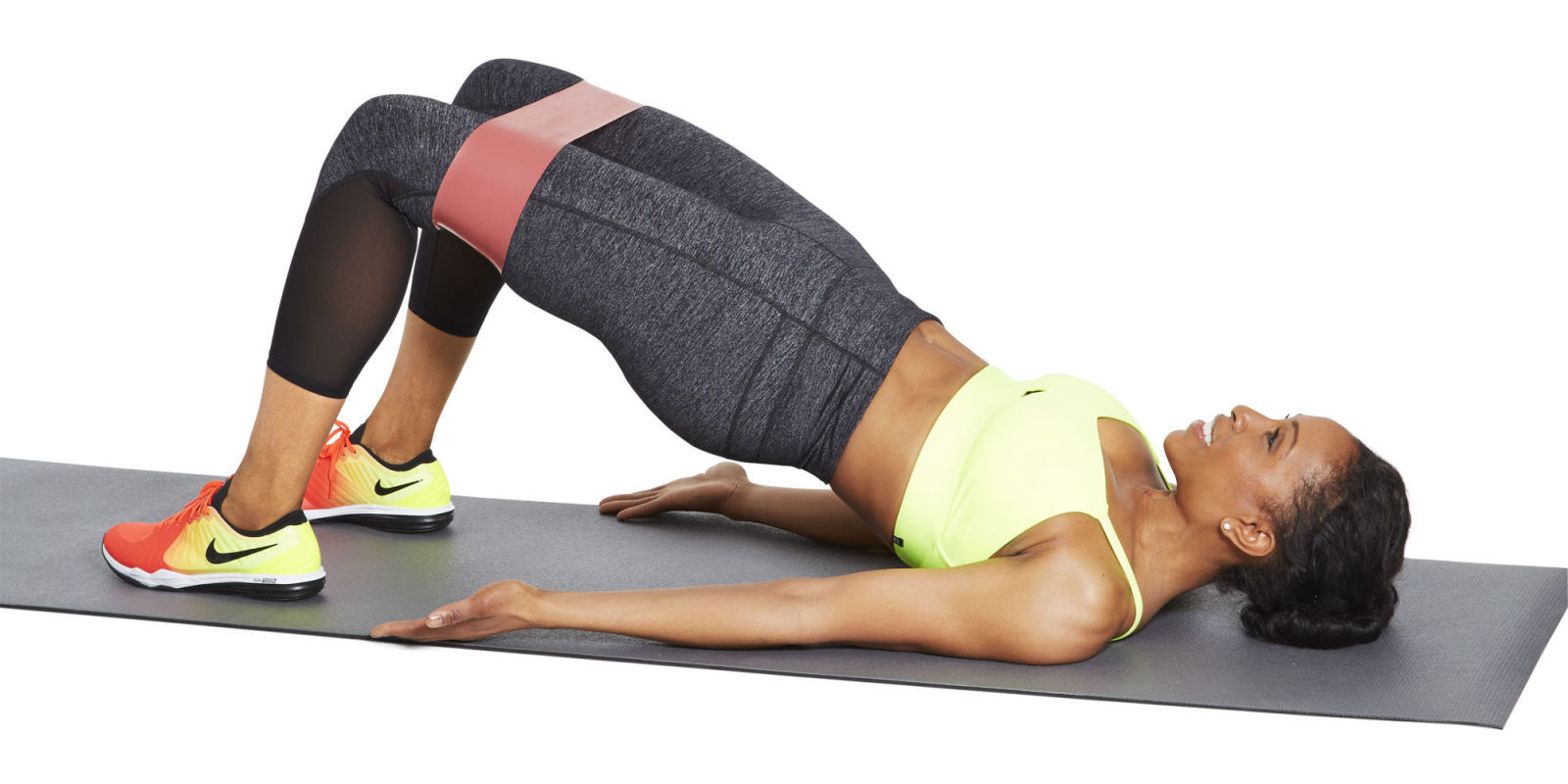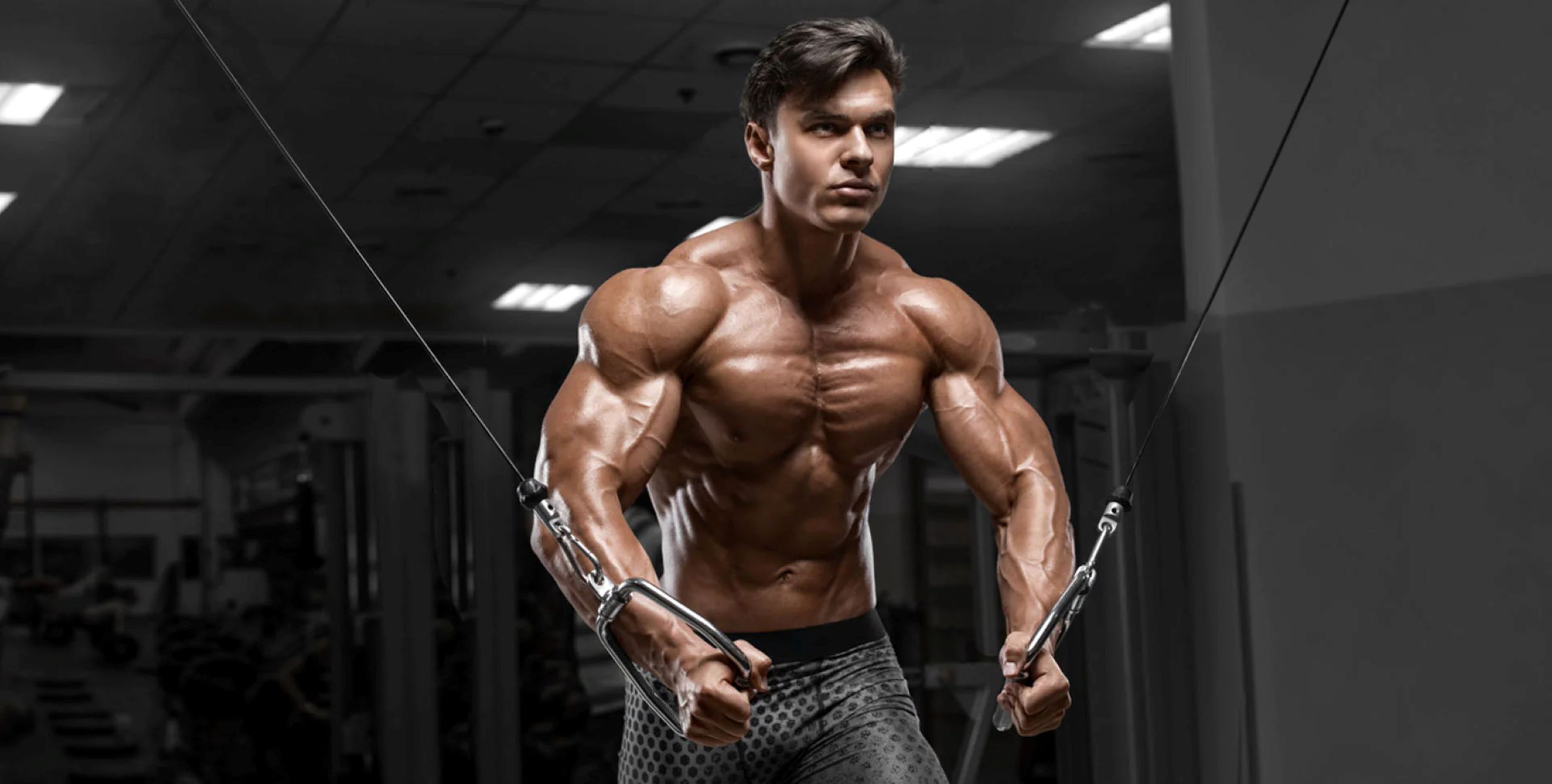

Featured
How To Workout Your Inner Chest
Published: August 12, 2023
Learn the best workout techniques to target and strengthen your inner chest muscles with this featured guide. Achieve a well-defined chest physique with expert tips and exercises.
Introduction
Welcome to the world of fitness, where building a strong and well-defined chest is a coveted goal for many individuals. While the overall development of the chest muscles is important, it’s equally crucial to pay attention to specific areas, such as the inner chest. In this article, we will explore the importance of training the inner chest and provide you with effective exercises and tips to maximize your results.
The inner chest, also known as the sternal head of the pectoralis major muscle, is located on the inner portion of the chest. It plays a significant role in creating that impressive “line” that separates the pectoral muscles and gives the chest a fuller appearance. Many people struggle to target this area effectively, but with the right exercises and techniques, you can develop a well-rounded and chiseled chest.
Training the inner chest goes beyond aesthetics; it contributes to overall upper body strength and stability. Strengthening the inner chest muscles helps improve your pushing movements, such as bench press and push-ups, and enhances your posture and shoulder health. It also complements the development of other muscles in the chest, creating a balanced and symmetrical physique.
Before diving into exercises and routines, it’s essential to warm up and stretch your chest muscles. Mobilizing the joints and increasing blood flow to the area helps prevent injuries and enables you to perform at your best. Incorporate gentle shoulder rolls, arm swings, and chest stretches into your warm-up routine to prepare your muscles and minimize the risk of strains or tears.
Now that you understand the significance of training the inner chest, let’s move on to the next section where we’ll discuss effective exercises that target this specific area.
Understanding the Inner Chest
Before we delve into the exercises for the inner chest, it’s important to have a basic understanding of its anatomy. The inner chest is primarily composed of the sternal head of the pectoralis major muscle, which is located on the inner portion of your chest wall, near the sternum. This muscle group works in conjunction with the other heads of the pectoralis major and the supporting muscles to enable various movements of the shoulder and upper body.
The inner chest muscles are responsible for adduction and horizontal flexion of the arm, which means they bring your arm closer to the centerline of your body and across your chest. When properly trained, they create that sought-after separation and definition between the two sides of the chest.
It’s also worth mentioning that genetics play a role in determining the shape and development of your chest muscles, including the inner chest. Some individuals naturally have a more pronounced inner chest, while others may have to work harder to achieve the desired look. However, with consistent training and proper technique, anyone can develop a strong and well-defined inner chest.
One common mistake many people make is neglecting the inner chest and solely focusing on traditional exercises like bench press and push-ups, which primarily target the outer chest. While these exercises are essential for overall chest development, they may not effectively isolate the inner chest muscles. It’s vital to incorporate exercises specifically designed to target and activate the inner chest fibers.
By understanding the anatomy and function of the inner chest, you can tailor your training routine to effectively stimulate and develop this area. In the next section, we will discuss the importance of training the inner chest and how it contributes to your overall chest development and upper body strength. Let’s dive in!
Importance of Training the Inner Chest
When it comes to chest training, many individuals focus on developing the outer chest muscles, neglecting the inner chest. However, training the inner chest is just as crucial for overall chest development and creating a well-rounded physique. Let’s explore the importance of incorporating inner chest exercises into your workout routine.
1. Symmetry and definition: Developing a strong and aesthetic chest involves creating balance and symmetry between the inner and outer chest muscles. By targeting the inner chest, you can achieve that desired separation and definition, giving your chest a more complete and sculpted appearance.
2. Enhanced pushing movements: The inner chest muscles play a significant role in various pushing exercises, such as bench press, push-ups, and dips. A well-developed inner chest helps improve your strength and power during these movements, enabling you to lift more weight and perform better overall.
3. Upper body strength and stability: Strengthening the inner chest muscles contributes to overall upper body strength and stability. By properly engaging and activating the inner chest, you can improve your shoulder health and stability, reducing the risk of injuries and improving your performance in other upper body exercises.
4. Posture and appearance: A strong inner chest helps support proper posture and alignment of the upper body. It can counterbalance the effects of a weak upper back and shoulders, promoting a more upright and confident posture. Additionally, a well-defined and developed chest adds to your overall aesthetic appeal.
5. Functional movements: The recruitment of the inner chest muscles is not limited to the gym; it extends to various functional movements in everyday life. Activities such as pushing, pulling, and lifting require the involvement of the inner chest muscles. Strengthening them will not only improve your performance in the gym but also make daily tasks easier and more efficient.
It’s important to note that while training the inner chest is beneficial, it should not be the sole focus of your chest workouts. A well-rounded approach that includes exercises targeting the inner and outer chest, as well as the upper back and shoulders, is key to achieving optimal chest development and overall upper body strength.
Now that you understand the importance of training the inner chest, let’s move on to the next section where we’ll discuss warm-up and stretching techniques to prepare your muscles for an effective workout.
Warm-up and Stretching
Prior to engaging in any strenuous physical activity, including chest workouts, it is essential to properly warm up your muscles and perform stretching exercises. A thorough warm-up routine prepares your body for the forthcoming exercises, increases blood circulation, improves joint mobility, and reduces the risk of injuries. Let’s explore some effective warm-up and stretching techniques for your chest workout.
1. Light Aerobic Activity: Start your warm-up with five to ten minutes of light aerobic activity, such as jogging, jumping jacks, or cycling. This raises your heart rate and increases blood flow to your muscles, preparing them for the upcoming chest exercises.
2. Dynamic Chest Stretches: Perform dynamic chest stretches to loosen up your chest muscles and enhance their flexibility. These stretches involve controlled movements that mimic the exercises you’ll be performing. For example, arm circles, chest fly stretches, and across-the-body arm swings are effective dynamic stretches for the chest.
3. Shoulder Mobility Exercises: Proper shoulder mobility is important for chest exercises, as it allows for a full range of motion and optimal muscle activation. Incorporate shoulder rolls, arm circles, and shoulder dislocations (with a resistance band) to improve the mobility and flexibility of your shoulder joints.
4. Chest Openers: Chest openers are static stretches that target the chest muscles and help alleviate tightness. Stand next to a doorway or wall, bend your elbow at a 90-degree angle, and place your forearm and palm against the doorframe or wall. Gently lean forward, feeling a stretch in your chest. Hold for 20-30 seconds and repeat on the other side.
5. Resistance Band Pull-Aparts: Using a resistance band, hold it in front of you with your arms extended at shoulder height. Keeping your arms straight, pull the band apart by squeezing your shoulder blades together. This exercise helps activate the muscles of the upper back and promotes proper posture for your chest workout.
Remember, warming up and stretching are essential components of your workout routine. They not only prepare your muscles for the physical demands of the exercises but also enhance your performance and reduce the risk of injury. Take the time to warm up and stretch properly before each chest workout for optimal results.
Now that you’re warmed up and ready to go, let’s move on to the next section where we’ll discuss effective exercises specifically targeting the inner chest.
Effective Exercises for the Inner Chest
When it comes to targeting and strengthening the inner chest, certain exercises have proven to be highly effective. By incorporating these exercises into your workout routine, you can isolate and activate the inner chest muscles for optimal growth and development. Let’s explore some of the best exercises for the inner chest.
1. Dumbbell Squeeze Press: Lie flat on a bench with a dumbbell in each hand, palms facing each other. As you press the dumbbells up, focus on squeezing them together, emphasizing the contraction in your inner chest. Lower the dumbbells back down and repeat for the desired number of repetitions.
2. Cable Crossovers: Stand in the center of a cable machine with the pulleys set at the highest position. Grab the handles and step forward, keeping your feet shoulder-width apart. Bring your hands down and across your body, crossing them at the bottom of the movement to fully engage the inner chest. Return to the starting position in a controlled manner and repeat.
3. Inner Chest Push-ups: Assume a push-up position with your hands slightly closer together than shoulder-width apart. As you lower your body down, focus on pushing through your inner chest to activate those muscles. Push back up to the starting position and repeat. You can modify this exercise by performing it on an incline or using push-up handles.
4. Dumbbell Pullovers: Lie flat on a bench with only your upper back and shoulders supported. Hold a single dumbbell with both hands, arms extended overhead. Keeping your elbows slightly bent, lower the dumbbell behind your head in a controlled motion, feeling the stretch in your chest. Raise the dumbbell back up to the starting position and repeat.
5. Medicine Ball Squeezes: Hold a medicine ball with both hands and extend your arms in front of you. Squeeze the ball as hard as you can, engaging your inner chest muscles. Hold for a few seconds and then release. Repeat for the desired number of repetitions. You can vary the intensity by using a heavier or lighter medicine ball.
Remember to focus on maintaining proper form and technique throughout each exercise. It’s crucial to feel the contraction in your inner chest muscles as you perform each repetition. Start with lighter weights and gradually increase the resistance as you become more comfortable and stronger.
Incorporating these inner chest exercises into your routine, along with exercises targeting the entire chest, will help you achieve a well-developed and balanced chest. Allow for adequate rest and recovery between workouts to allow your muscles to grow and adapt.
Now that you have a solid understanding of the exercises for the inner chest, let’s move on to the next section where we’ll provide tips for ensuring proper form and technique.
Tips for Proper Form and Technique
Performing exercises with proper form and technique is crucial not only for targeting the inner chest effectively but also for preventing injuries and maximizing your results. Here are some important tips to keep in mind to ensure proper form and technique during your inner chest workouts.
1. Mind-Muscle Connection: Focus on establishing a strong mind-muscle connection by consciously engaging and contracting your inner chest muscles during each repetition. Visualize the muscles working and squeeze them at the peak of each movement to maximize the activation.
2. Maintain a Controlled Pace: Avoid rushing through the exercises. Perform each repetition in a slow and controlled manner, emphasizing the eccentric (negative) portion of the movement. This allows for better muscle engagement and reduces the risk of jerky or uncontrolled movements.
3. Use a Full Range of Motion: Ensure that you utilize a full range of motion during each exercise. This means fully extending and stretching the muscles on the eccentric portion and contracting them fully on the concentric portion. Avoid shortening the range of motion, as it limits muscle activation and growth.
4. Keep Your Shoulders Back and Down: Proper posture is key when performing inner chest exercises. Keep your shoulders back and down throughout the movements to prevent excessive stress on the joints and to ensure proper muscle activation in the chest area.
5. Engage Your Core: Remember to engage your core muscles and maintain a stable and controlled body position throughout each exercise. This will provide stability and support, allowing you to focus on targeting your inner chest more effectively.
6. Choose the Right Weight: Select a weight that challenges you without compromising your form. Start with lighter weights if you’re a beginner and gradually increase the resistance as you get stronger and more comfortable with the exercises.
7. Breathe Properly: Pay attention to your breathing while performing inner chest exercises. Inhale during the eccentric phase and exhale during the concentric phase of each movement. This helps stabilize your core and maintain proper breathing rhythm throughout the workout.
8. Seek Guidance: If you’re new to these exercises or unsure about proper form and technique, consider working with a qualified fitness professional or personal trainer. They can provide guidance, demonstrate correct form, and help you make adjustments to optimize your workouts.
By implementing these tips, you can ensure that you’re targeting the inner chest muscles effectively, maximizing muscle activation, and minimizing the risk of injury. Remember, quality of movement is more important than quantity, so prioritize proper form and technique in your workouts.
In the next section, we’ll provide you with a sample inner chest workout routine to help you structure your training sessions effectively.
Sample Inner Chest Workout Routine
Ready to put your knowledge into action? Here’s a sample inner chest workout routine that you can incorporate into your training regimen. Remember to warm up properly before beginning this workout. Perform each exercise with proper form and technique, and adjust the weights and repetitions according to your fitness level and goals.
1. Dumbbell Squeeze Press: 3 sets of 8-10 repetitions. Focus on squeezing the dumbbells together at the top of the movement to engage the inner chest muscles.
2. Cable Crossovers: 3 sets of 12-15 repetitions. Cross your hands over each other at the bottom of the movement to fully activate the inner chest.
3. Inner Chest Push-ups: 3 sets of 10-12 repetitions. Keep your hands closer than shoulder-width apart and focus on pushing through your inner chest as you perform the movement.
4. Dumbbell Pullovers: 3 sets of 10-12 repetitions. Lower the dumbbell behind your head, feeling the stretch in your chest, and then raise it back up to engage the inner chest.
5. Medicine Ball Squeezes: 2 sets of 15-20 repetitions. Hold the medicine ball in front of you and squeeze it as hard as you can, focusing on engaging the inner chest muscles.
Take 60-90 seconds of rest between each set to allow for proper recovery. Remember to breathe properly and maintain a controlled pace throughout each exercise. Focus on the mind-muscle connection and visualize your inner chest muscles working.
Feel free to modify the number of sets, repetitions, and weight according to your individual preferences and fitness level. Listen to your body and adjust as needed to challenge yourself while maintaining proper form.
Now that you have a sample inner chest workout routine, let’s move on to the next section where we’ll discuss common mistakes to avoid during your inner chest training.
Common Mistakes to Avoid
While training your inner chest, it’s important to be aware of common mistakes that can hinder your progress and potentially lead to injury. By avoiding these mistakes, you can maximize the effectiveness of your workouts and achieve optimal results. Let’s look at some common mistakes to avoid during your inner chest training.
1. Neglecting Proper Form: One of the biggest mistakes is sacrificing proper form for heavier weights or more repetitions. Always prioritize maintaining proper form and technique to effectively target the inner chest muscles and minimize the risk of injury.
2. Using Too Much Momentum: Avoid using momentum to lift the weights, as it takes away the tension from your muscles. Focus on controlling the movement and feeling the muscle contraction throughout each repetition.
3. Neglecting Eccentric (Negative) Phase: Many people tend to rush through the eccentric or negative phase of the movement. Ensure that you lower the weight in a controlled manner, allowing your muscles to fully stretch and engage for maximum benefit.
4. Mindless Repetitions: Mind-muscle connection is crucial for effective inner chest training. Avoid going through the motions without consciously engaging and contracting your inner chest muscles. Focus on the quality of each repetition, rather than the quantity.
5. Overtraining or Undertraining: Finding the right balance in terms of training frequency is essential. Overtraining can lead to burnout and injury, while undertraining may not provide enough stimulus for muscle growth. Listen to your body and allow for adequate rest and recovery between workouts.
6. Poor Breathing Technique: Breathing properly during your workouts is often overlooked. Improper breathing can affect stability and muscle activation. Inhale during the eccentric phase and exhale during the concentric phase of each exercise to maintain proper breathing rhythm.
7. Ignoring Full Range of Motion: Ensure that you go through a full range of motion during each exercise. Avoid shortening the range of motion, as it limits muscle activation and growth potential. Focus on fully extending and contracting the inner chest muscles with each repetition.
8. Skipping Warm-up and Stretching: Neglecting warm-up and stretching routines can increase the risk of injury. Always take the time to properly warm up your muscles and perform stretches to mobilize the joints and increase blood flow.
By avoiding these common mistakes, you can optimize your inner chest training and make consistent progress. Remember to focus on quality over quantity, listen to your body, and prioritize proper form and technique in your workouts.
In the next section, we’ll discuss the importance of progress tracking and how to overcome plateaus in your inner chest training.
Progress Tracking and Overcoming Plateaus
Tracking your progress and making adjustments along the way is essential for continued growth and improvement in your inner chest training. It’s common to encounter plateaus, where your progress slows down or comes to a halt. By implementing effective strategies, you can overcome plateaus and continue making progress. Let’s explore the importance of progress tracking and how to overcome plateaus in your inner chest training.
Keeping a workout journal or using a fitness tracking app can help you monitor your progress over time. Record the exercises, sets, repetitions, and weights used for each workout session. This allows you to track your strength gains and identify areas for improvement. Additionally, taking progress photos periodically can provide visual evidence of your gains and motivate you to push harder.
When you notice a plateau in your inner chest training, it’s time to shake things up. Here are some strategies to help you overcome plateaus and continue making progress:
1. Progressive Overload: Gradually increase the intensity of your workouts by adding more weight, increasing the number of repetitions, or performing additional sets. This progressive overload principle challenges your muscles and stimulates growth.
2. Variation of Exercises: Introduce new exercises or variations of existing exercises to target your inner chest from different angles. This can activate different muscle fibers and stimulate growth in the plateaued area.
3. Adjusting Repetition Range: Altering the repetition range can provide a fresh stimulus for your muscles. For example, if you’ve been performing higher repetitions, lower the repetitions and increase the weight to challenge your muscles in a different way.
4. Supersets and Drop Sets: Incorporate supersets or drop sets into your workout routine. These techniques increase the intensity and challenge your muscles with increased time under tension.
5. Rest and Recovery: Sometimes, taking a break from intense training can help your body recover and break through a plateau. Make sure to get enough rest, prioritize quality sleep, and allow your muscles to fully recover before pushing them again.
6. Adjusting Training Frequency: Consider adjusting the frequency of your inner chest workouts. It may be beneficial to decrease or increase the number of times you train the inner chest each week, based on your individual recovery ability.
7. Seek Professional Guidance: If you’re struggling to overcome a plateau, consulting a fitness professional or a personal trainer can provide fresh insights and personalized strategies to help you break through.
Remember, results don’t come overnight, and overcoming plateaus requires patience and persistence. By implementing these strategies and continually challenging your muscles, you can push through plateaus and continue making progress in your inner chest training.
In the final section, we’ll conclude our article and summarize the key takeaways from our discussion.
Conclusion
Congratulations! You have now gained valuable knowledge about training your inner chest effectively. Understanding the importance of the inner chest, incorporating proper warm-up and stretching techniques, and executing the right exercises with proper form and technique are essential steps in achieving a well-defined and balanced chest.
Remember to focus on the mind-muscle connection, maintain a controlled pace, and use a full range of motion during your inner chest exercises. Avoid common mistakes such as neglecting proper form, using momentum, and mindless repetitions. Instead, prioritize engaging your inner chest muscles, breathing properly, and finding the right balance between challenging yourself and allowing for adequate rest and recovery.
Tracking your progress, whether through a workout journal or fitness tracking app, is crucial for continued improvement. By implementing strategies such as progressive overload, exercise variation, and adjusting repetition ranges, you can overcome plateaus and keep making progress in your inner chest training.
So, get out there and start incorporating these techniques into your workouts. Strengthen your inner chest, develop a well-rounded physique, and improve your overall upper body strength. Remember, consistency is key, and with patience, persistence, and the right approach, you can achieve your goals.
Now, go ahead and put your newfound knowledge into action. Train your inner chest, challenge yourself, and enjoy the journey towards a stronger and more defined chest!
